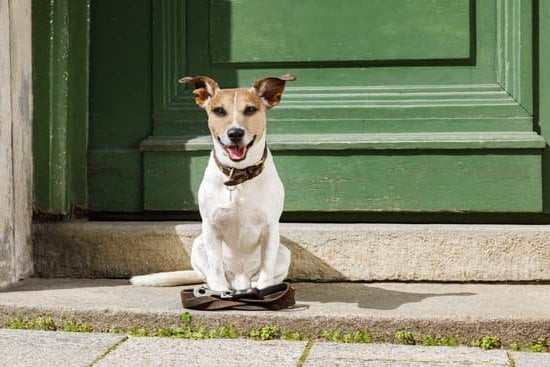How Long To Crate Train A Dog At Night
Training your dog not to pee in the house at night can take some time, but it’s definitely worth it! Dogs usually have to go to the bathroom after eating, drinking, or playing. So, if you can create a routine for your dog where they are not allowed to eat, drink, or play right before bed, then they will be less likely to have to go to the bathroom in the middle of the night.
One way to help train your dog not to pee in the house at night is to crate train them. When you crate train your dog, you are teaching them that the crate is their safe place where they can go to the bathroom without having to worry about getting in trouble. Start by putting your dog in the crate for short periods of time (5-10 minutes) and gradually increase the amount of time they are in the crate.
If your dog starts to pee or poop in the crate, don’t scold them! This will only make them more anxious and likely to have an accident in the crate again in the future. Instead, calmly clean up the mess and start the crate training process again. Be sure to praise your dog when they do not have an accident in the crate.
It may take a little bit of time, but with patience and persistence, you will be able to train your dog not to pee in the house at night!
How To Train Dog To Sleep In Crate
Crate training a dog is one of the most effective ways to housebreak your pet. Dogs are den animals and instinctively want to seek out a small, enclosed space to sleep in. By providing your dog with his own crate, you can train him to think of the crate as his own personal space and encourage him to use it as a place to rest and relax.
The first step in crate training your dog is to choose the right crate. The crate should be big enough for your dog to stand up, turn around, and lie down in comfortably, but not much bigger. If the crate is too large, your dog may use one end as his bed and the other end as a bathroom.
Once you’ve chosen the right crate, begin by placing your dog’s food bowl in the crate and leaving the door open. Allow your dog to explore the crate and eat his food inside. Once he’s comfortable with the crate, begin closing the door while he’s eating, but make sure to open it again as soon as he’s finished. Gradually increase the amount of time the door is closed, but always make sure your dog can escape if he needs to.
Once your dog is comfortable eating in the crate with the door closed, begin training him to go into the crate voluntarily. Start by putting a treat in the crate and closing the door. As your dog eats the treat, praise him and give him another one. Once he’s learned to go into the crate for a treat, begin putting him in the crate for short periods of time (5-10 minutes) when you’re home. Gradually increase the amount of time he spends in the crate.
If your dog begins to whine or bark in the crate, don’t give in and let him out. Wait until he’s quiet before opening the door. If your dog continues to bark or whine, you may need to increase the amount of time he spends in the crate or consult with a professional dog trainer.
The most important thing to remember when crate training your dog is to be patient and consistent. Crate training can be a slow process, but with patience and perseverance, you’ll be rewarded with a well-behaved dog that loves his own special space.
Crate Training A Foster Dog
The crate is a valuable tool for managing a foster dog. It can be used for housetraining, providing a safe place for the dog to relax, and as a means of preventing destructive behavior.
When using the crate for housetraining, the dog should be taken out regularly to relieve himself. If the dog is not housetrained, begin by putting him in the crate for short periods of time and gradually increase the amount of time he spends in the crate.
The crate can also be used to prevent the dog from engaging in destructive behavior. For example, if the dog is chewing on furniture when left unsupervised, he can be put in the crate instead. This will help to teach the dog that he cannot chew on furniture when no one is around to stop him.
The crate can be a valuable tool for managing a foster dog, but it should not be used as a form of punishment. The dog should be given plenty of positive reinforcement when he behaves appropriately and should only be put in the crate as a last resort.
Crate Training An Old Dog
It can be hard to crate train an old dog. They may be set in their ways, and may not understand why they are being confined. However, with patience and perseverance, it is possible to crate train an old dog.
The first step is to introduce the dog to the crate. Place a soft bed or blanket inside, and put some treats inside as well. Let the dog explore the crate on its own, and don’t force it to go inside.
Once the dog is comfortable with the crate, start putting it in for short periods of time. Gradually increase the amount of time the dog spends in the crate.
If the dog starts to whine or bark, don’t give in and let it out. Wait until it is quiet before opening the crate. This will teach the dog that it can’t get out of the crate by making noise.
If the dog has accidents in the crate, don’t get angry. Simply clean up the mess and continue crate training.
With patience and perseverance, you can crate train an old dog.
Can You Crate Train A 6 Month Old Dog
?
The answer to this question is yes, you can crate train a 6-month-old dog. However, it is important to note that crate training should not be used as a punishment, but rather as a tool to help your dog learn to behave in a way that is acceptable to you.
The first step in crate training a 6-month-old dog is to introduce the dog to the crate. You can do this by placing the crate in a room where the dog spends a lot of time, such as the living room, and by putting some of the dog’s favorite toys and treats inside the crate. Once the dog is comfortable going near the crate, you can start to slowly close the door while the dog is inside. If the dog becomes anxious or tries to escape, open the door and give the dog a few treats to encourage him to stay inside.
Once the dog is comfortable staying in the crate with the door closed, you can start to use the crate as a place for the dog to sleep at night or during short periods of time when you cannot keep an eye on him. Be sure to give the dog plenty of opportunities to go outside and relieve himself during the day, and never leave the dog in the crate for more than a few hours at a time.

Welcome to the blog! I am a professional dog trainer and have been working with dogs for many years. In this blog, I will be discussing various topics related to dog training, including tips, tricks, and advice. I hope you find this information helpful and informative. Thanks for reading!





